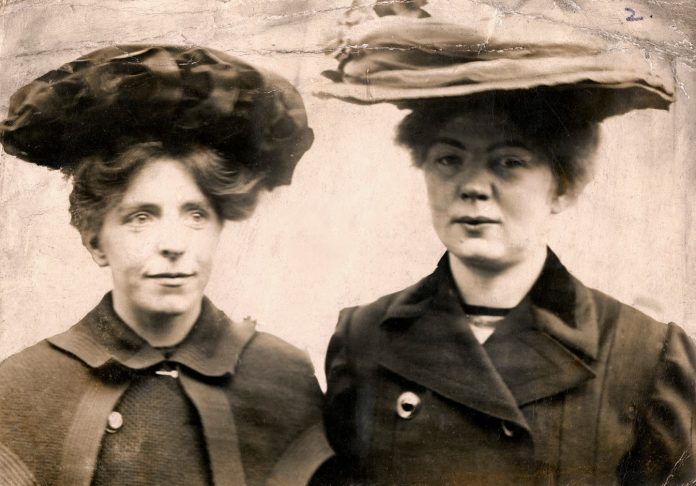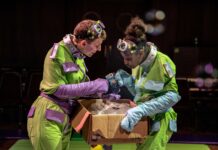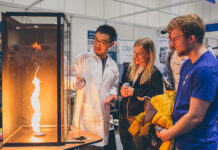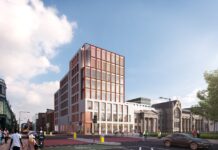A memorial to commemorate the success of the Teetotal Movement; a statue to remember the ‘Cracker Packers’ – female workers at the former Carr’s factory; and a tribute to the only working-class woman and suffragette to reach the top of the Women’s Social and Political Union hierarchy, are among the many memorials nominated by the public in response to a call-out by Historic England to find the secret and lesser-known murals, statues and tributes in the North West.
The search was carried out as part of Historic England’s Immortalised season, which aims to help people explore the country’s memorial landscape – who is reflected, who is missing, and why. Monuments and statues are under increasing scrutiny as debates grow about why there are so few women and minorities among our statues. As part of Immortalised Historic England is organising a debate and public participation to explore who and what will be remembered in our public spaces, and how we and future generations will commemorate.
People from across the North West submitted photographs and stories of memorials, locally known and loved, but others that have almost been forgotten. On the back of the nominations the Preston Abstinence Memorial in Lancashire has been listed by the Department for Digital, Culture, Media and Sport (DCMS) on the advice of Historic England, and a selection will be unveiled in the Immortalised exhibition which will open in London on 30th August.
As well as showcasing some of England’s local monuments, street shrines and community tributes, Immortalised: The People Loved, Left and Lost in our Landscapeexplores the variety of ways people and events have been commemorated in England, past and present.
Stories of immortalisation, from the heroic and sad, to the quirky, inspirational and challenging, are told through photographs, archival material and individual objects presented in an immersive way that gives life and voice to the monuments and memorials on show.
The exhibition also looks at who we have chosen to memorialise in the past, and why, and highlights the well-documented lack of women, working class people and people of colour in England’s memorial landscape. Also on display are the winning designs of a national competition that asked artists, architects and designers to explore and visualise what memorials of the future could look like.
Duncan Wilson, Chief Executive of Historic England, said:
“We are very grateful that so many people living in the North West took the time to tell us about memorials in their communities and the stories behind them. At a time when our national statues and memorials are under increasing scrutiny, we’re delighted to shine a light on these often undiscovered and under-appreciated but precious markers of our past. Every one of those that’s been nominated has a local champion and someone who cares about it and about the story it tells. It’s important for us all to know who has been commemorated in our public spaces and what this can tell us about our history, as we look at how public memorials are evolving today.”
Memorials nominated by people living in the North West
Locally well-loved statues, memorials, murals and shrines were suggested by people living in the North West, including:
‘Cracker Packers’ on a Carr’s Table Water Biscuit, Carlisle: The ‘Cracker Packers’ was the affectionate nickname for workers at the former Carr’s factory in Caldewgate. A bronze statue to commemorate the factory’s largely female workforce was commissioned by Carlisle City Council and created by the award-winning artist, Hazel Reeves. Unveiled in March 2018, it features two women workers, one from 1910 and one from the present day. They are standing on a bronze Carr’s Table Water Biscuit mounted on a granite plinth. At its height Carr’s employed 3,000 workers, the majority of whom were women who began work in the factory at the age of just 14. Often the factory would be the place of work for many generations of the same family, with women dedicating their entire working lives to Carr’s crackers.
Annie Kenney, suffragette, Oldham: Kenney (1879 – 1953) was the first woman to be arrested for direct action alongside Christabel Pankhurst, one of the most vociferous members of the Suffragette movement. A memorial to Kenney is on the wall of Leesbrook Mill near Oldham where Kenney worked for 15 years before becoming involved in the campaign for women’s suffrage after hearing Christabel Pankhurst speak about women’s rights at an Independent Labour Party meeting. When the Women’s Social and Political Union (WSPU) decided to open a branch in the East End of London, Kenney began to work full time for the organisation. Kenney was the only working-class woman to reach the top of WSPU’s hierarchy. It was a very middle-class organisation, with few working-class women in important roles. After women aged over 30 won the vote in 1918, Kenney married James Taylor and settled in Hertfordshire. They had a son, Warwick, in 1921. She died aged 73 on 9th July 1953.
Robert Dixon iron monument, Striding Edge, Cumbria: A memorial commemorates Robert Dixon of Rooking Patterdale who, on the morning of 27th November 1858, left home to follow the Patterdale Foxhounds. During the course of that morning he fell from Striding Edge on Helvellyn. Critically injured he was taken home but died in the early hours of the next morning aged 33 years. He was buried in Patterdale Churchyard three days later.
The Fog Bell, Southport, Merseyside: The Fog Bell was first erected to help prevent a repeat of the tragedy which took place on 26th January 1869 when seven local fishermen went hand-putting for shrimps, were caught in fog and drowned. When the original fog bell was destroyed in a storm it was reconstructed on Marshside Road.
Stuart Sutcliffe bench, Merseyside: A bench commemorates ‘the lost Beatle’, Stuart Sutcliffe who was the original bass guitarist for the Beatles. It is located in a small graveyard in Huyton Cemetery. Sutcliffe died aged 21 in 1962 as the result of a ruptured aneurysm.
Exhibition Visitor Information
Immortalised: The People Loved, Left and Lost in our Landscape
30th August – 16th September 2018, Wednesday to Sunday
The Workshop, 26 Lambeth High Street, Lambeth, London SE1 7AG
Nearest tube: Vauxhall (Victoria line) and Lambeth North (Bakerloo + Northern lines)
Free entry







